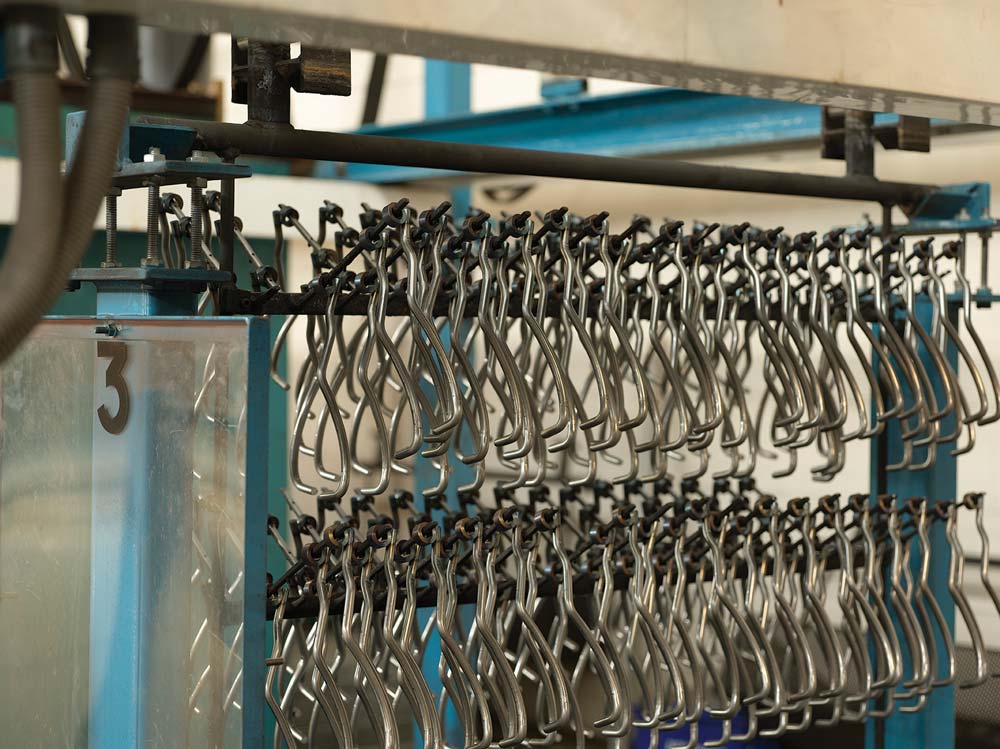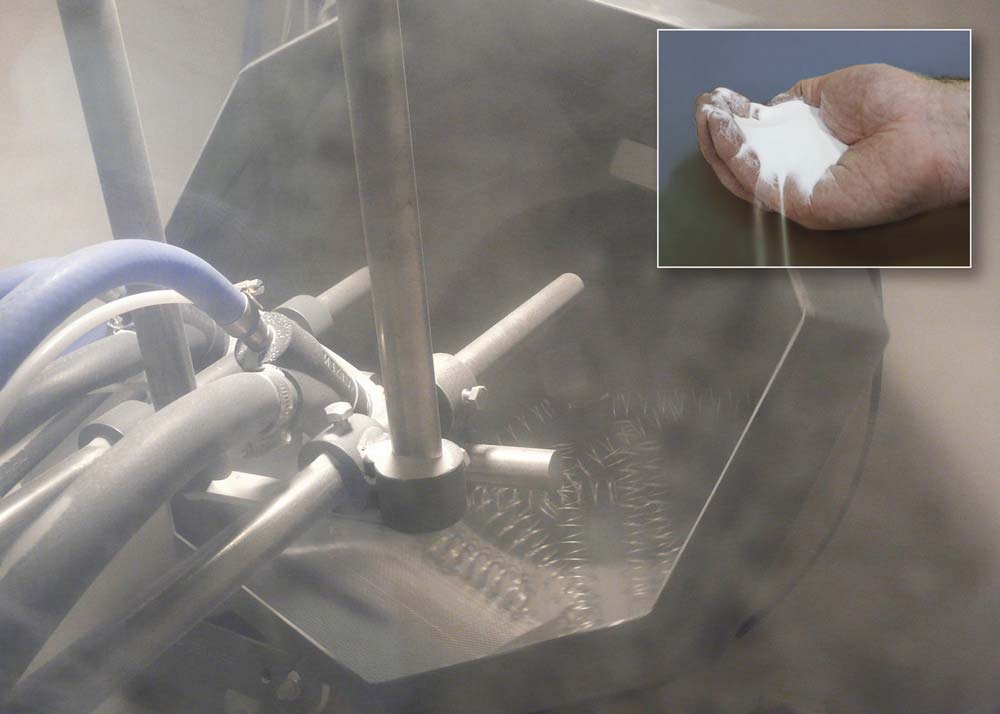Protecting high performance springs with high technology finishes
The performance of springs can be significantly affected by corrosion and this can result in early fatigue failure. It is therefore important that their surfaces are protected against elements that could cause corrosion during their storage and use. There is a wide choice of surface treatments that can be considered but there are some finishes and plating processes that should be avoided due to their effect on the fatigue life of the spring that could result in premature failure due to hydrogen embrittlement. Processes that can lead to this include cathodic protection, phosphating, pickling, and electroplating. Processes that involve exposing the springs to temperatures in excess of 200°C should also be avoided as they may adversely affect the characteristics of the spring.

So apart from corrosion resistance, what other reasons are there for wanting to apply a surface finish to springs? Where springs will be seen, for example in some automotive applications, they need to have the right look with many manufacturers specifying a black finish. Springs may need to be colour coded to identify their characteristics for example where the same style of spring needs to have different strengths for different applications.
Stainless steel is a popular choice for its corrosion resistance but the manufacturing processes such as bending and machining may contaminate the surface. By passivating the surface, any free iron (exposed iron on the surface of the part) is removed leaving a thin, passive layer usually comprised of chromium and its oxides. Since chromium is corrosion resistant, this layer provides greater protection to the already resistant base metal.
Springs can be finished by coating them with an inorganic micro layer zinc flake coating such as Delta-Tone which provides a metallically bright silver coating with a high corrosion protection. The cured coating has great flexibility and the low stoving process means there is no risk of hydrogen embrittlement. Delta Seal is a similar finish that when cured provides an adhesive, thin, extremely resistant coating that is available in a range of colours. Delta Seal has very good surface wetting properties making it an ideal choice for work pieces with complicated geometry – for example torsion springs.
An alternative is to use an electrophoretic coating process which uses a special paint that is electrically charged and attracted to the components being painted. This process provides a very uniform deposit over components that would be hard to paint using conventional painting processes. The process is popular for components being used in the automotive industry as the pleasing black finish offers good corrosion resistance.

Shot peening is a mechanical process that de-stresses the surface of the spring. It typically uses a turbine wheel to throw steel or glass beads at the component with great force. This has the effect of welding together imperfections on the surface, reducing the likelihood of fractures due to the formation of cracks. This process significantly increases fatigue strength extending the service length of the spring.
Of course it is possible to eliminate the need for a finishing process completely by using wire stock that is already surface coated, for example, with copper, tin, zinc or plastic. As well as this wire stock being more expensive, care has to be taken with storage and handling so as not to damage the coating. There may also be restrictions on the maximum allowable bending radius. However, the use of ready coated wire does have applications in the automotive industry (for example windscreen wiper springs) and in the electronics industry where, for example, a tin coating enables springs to be soldered.
High Technology finishes for critical applications
Certain applications such as those found in the aerospace, medical and defence industries require specialist cleaning and finishing processes for parts, assemblies and components. This is to ensure that any lubricants and debris from the manufacturing process is removed before the finished items are despatched to the customer. This is especially important for components being used in oxygen, hydraulic and other critical applications.
These processes need to be carried out under clean room conditions and, to comply with the requirements of the aerospace industry, the processes need to be carefully controlled and audited annually. Components are usually 100% inspected and individually bagged and sealed to ensure they are protected until they are ready to be used.
As the demand for springs for critical applications has continued to grow, manufacturers have had to expand their operations to include a wide range of finishes and cleaning processes. For example William Hughes has recently invested in a new cleanroom which has been constructed to Class 7 standards in accordance with ISO 14644-1. This enables an extended range of cleaning services to be offered to the aerospace industry.



